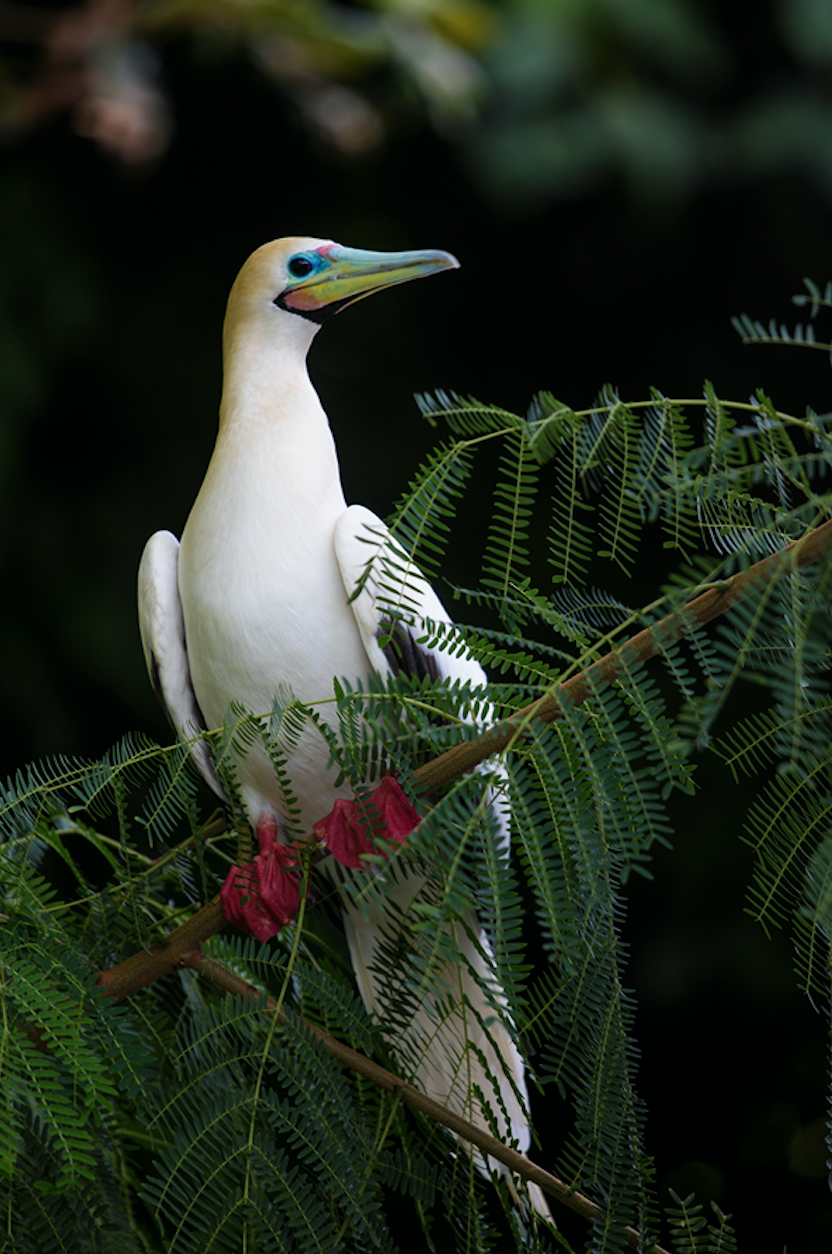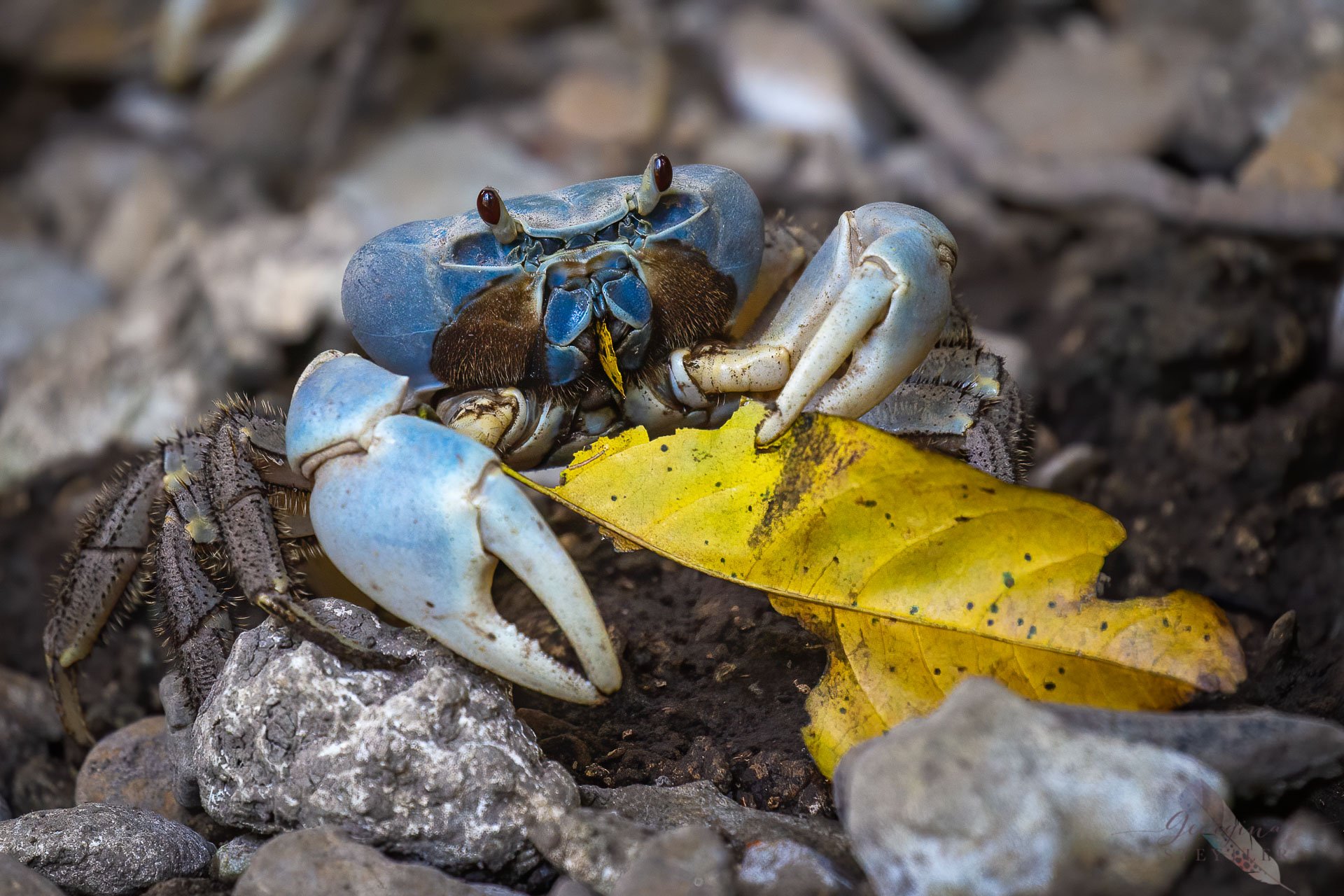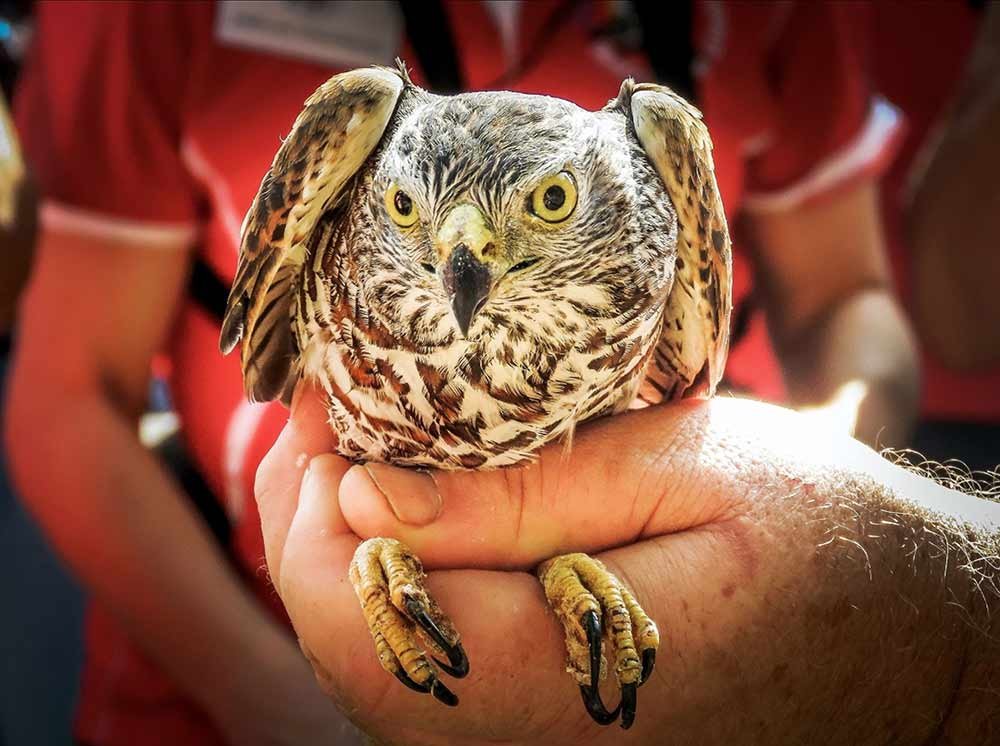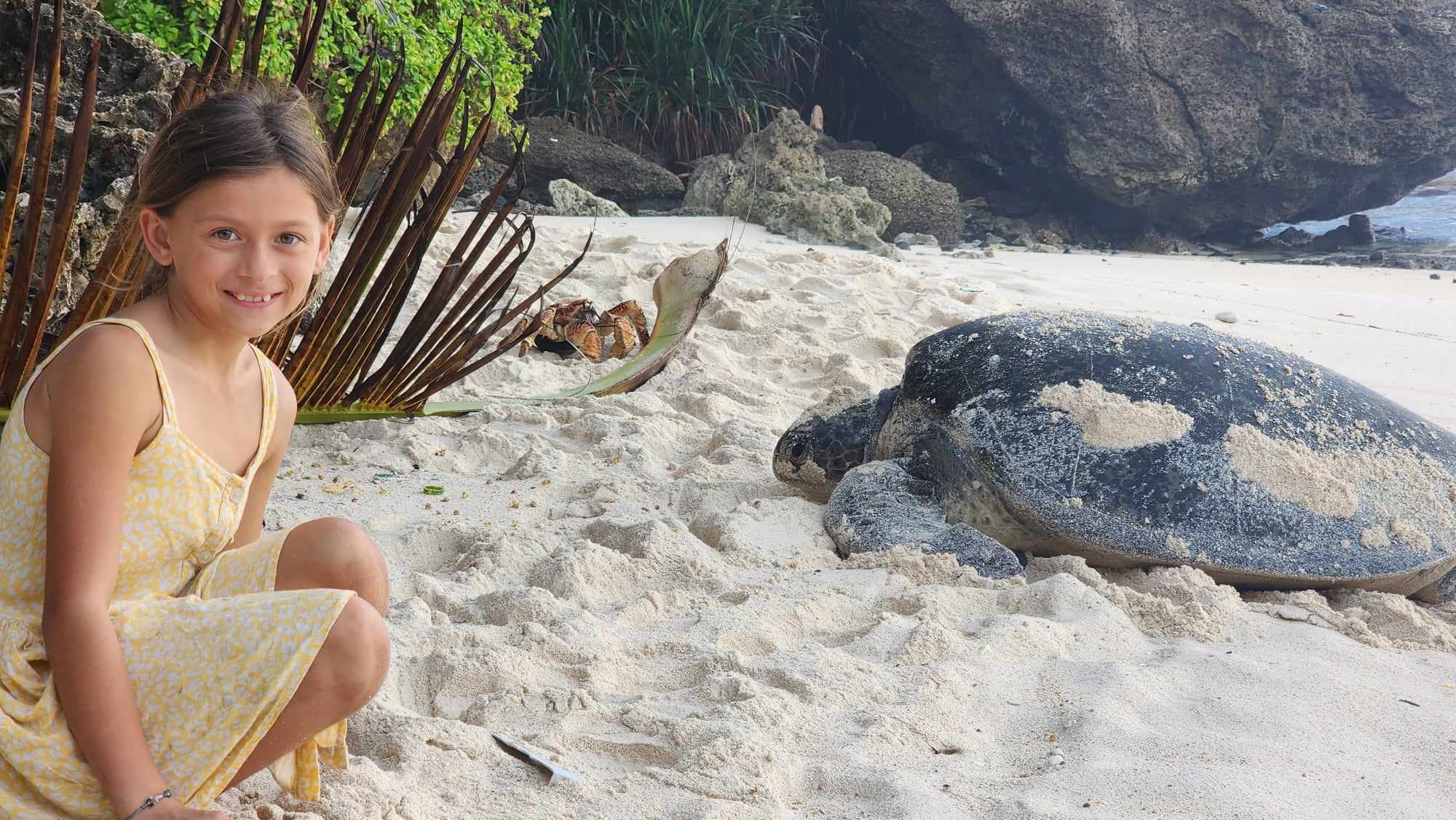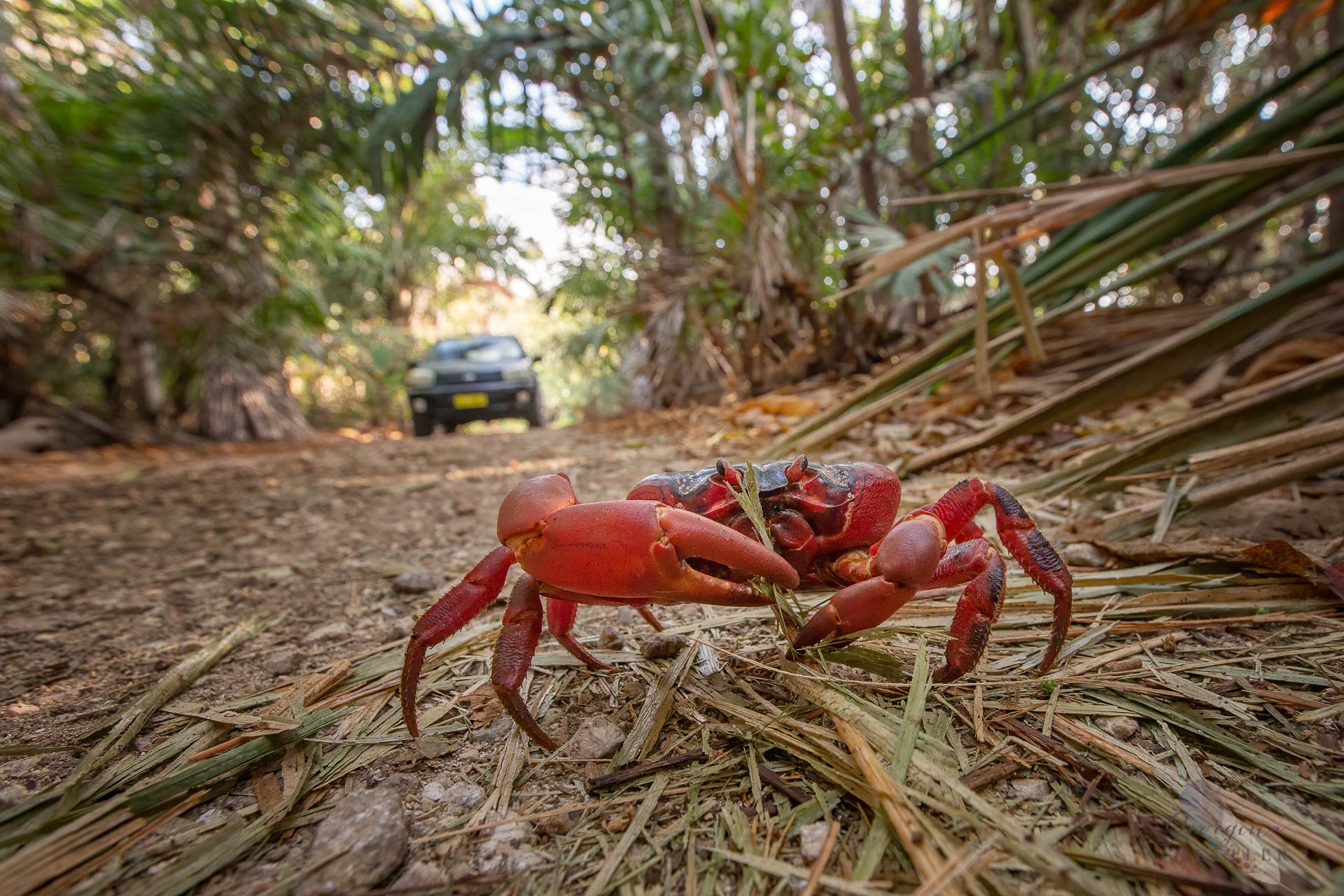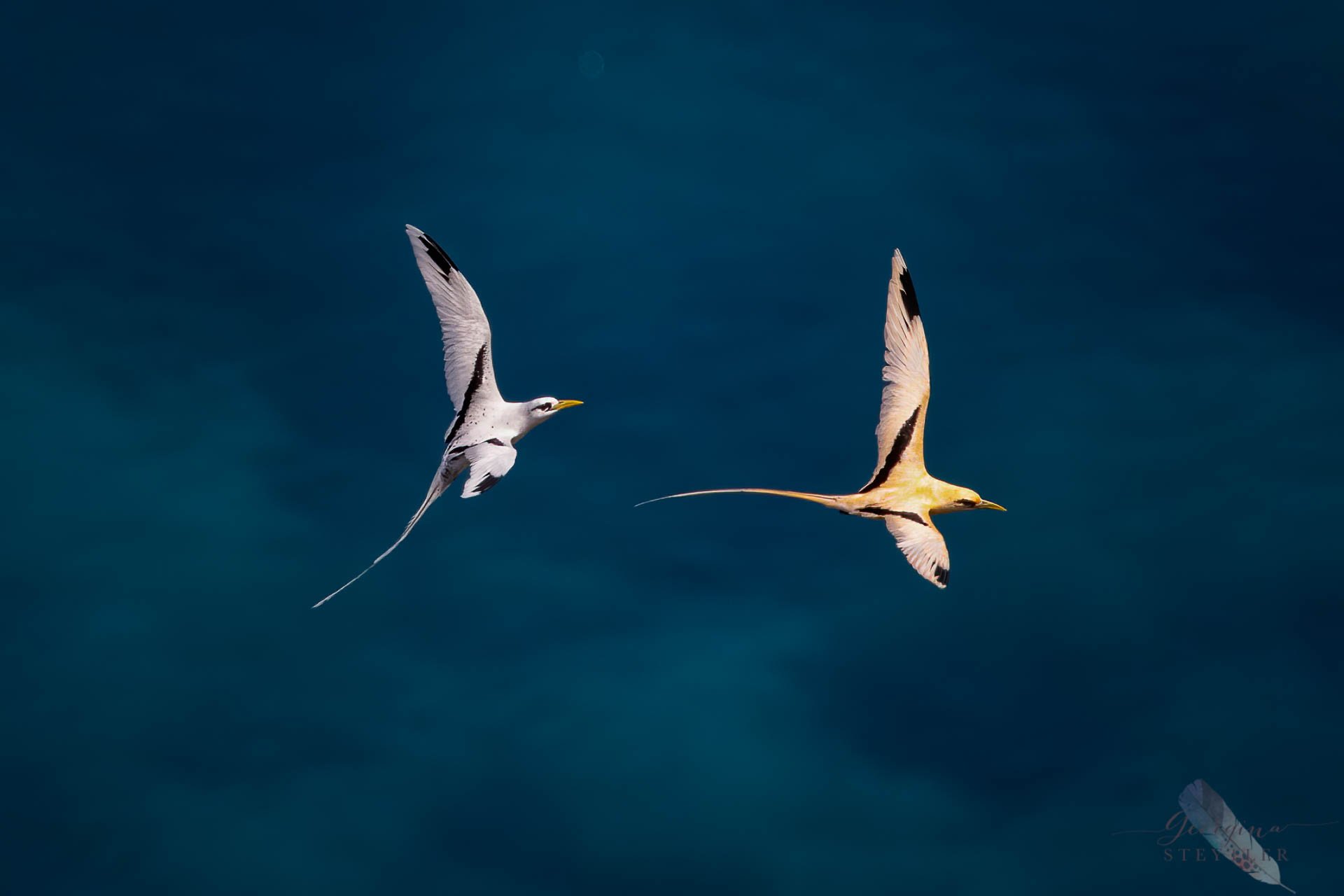
nature & wildlife
christmas island
Discover an enthralling destination where nature is your guide.
Nature & wildlife
Named the ‘Galapogos of the Indian Ocean,’ Christmas Island boasts a mesmerising tapestry of nature and wildlife, where lush rainforests, unique flora, and diverse fauna, including the famous red crab migration, create a captivating spectacle on this tropical Australian territory. You’ll be greeted by wildlife and immersed in nature at every turn on Christmas Island and we welcome you to discover its awe inspiring beauty.
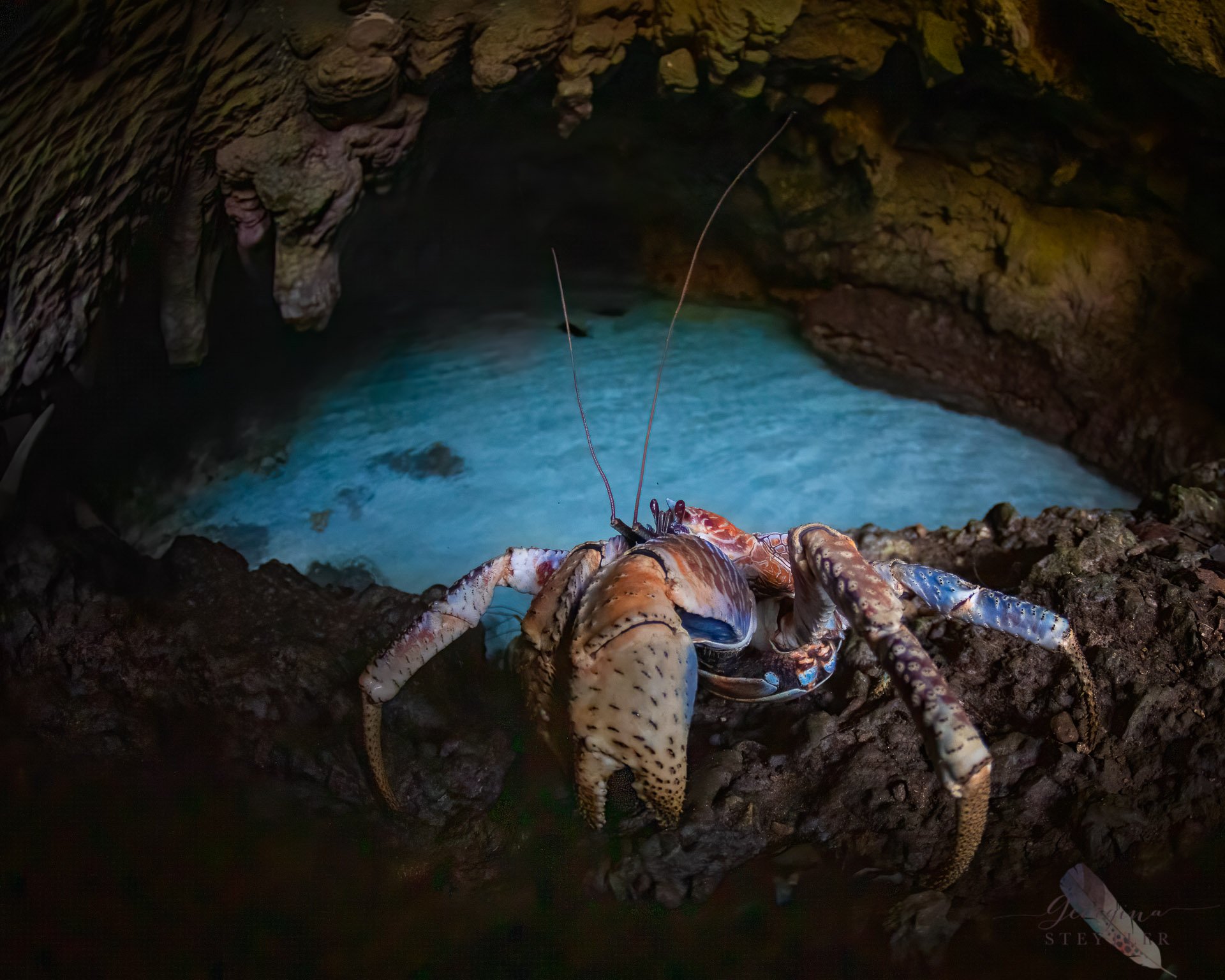
CHRISTMAS ISLAND’S GEOLOGICAL ORIGINS
Christmas Island is the peak of a basalt volcanic seamount which rose steeply from the ocean floor about 60 million years ago. The highest point of the island is Murray Hill, which rises to 361m above sea level. The island’s emergence is a result of a series of geological uplifts over 10 or so million years. At each stage layers of coral reefs built up over the basalt core, leaving today an almost continuous limestone cap. The ocean eroded cliffs at each uplift, forming the stepped terraces and inland cliffs of the island’s central plateau. Evidence of the island’s volcanic origins can be seen at The Dales and at Dolly Beach — where the underlying volcanic basalt is exposed.
CHRISTMAS ISLAND NATIONAL PARK
For nature lovers, Christmas Island National Park provides fantastic opportunities to observe unique plants and animals in their natural habitats. The park covers 85 square kilometres – about two-thirds of the island. As an isolated oceanic island, distant from other land masses, Christmas Island is home to a high proportion of endemic species – found nowhere else in the world. Several are endangered. The park protects significant ecosystems including much of the island’s uniquely structured rainforests and two wetlands of international importance, the Dales and Hosnies Springs. In and around the national park you’ll find a host of native sea and forest birds, unique fish, and land crabs – including tens of millions of red crabs, famous throughout the world for their spectacular annual breeding migration.
CHRISTMAS ISLAND FLORA
The influences of warm temperatures, high rainfall, isolation, fauna, soil depths and types, and geological history have fused to develop Christmas Island’s unique plant life. The island is home to 242 native plant species, including 16 endemic species found nowhere else in the world. About half the island’s plants are not found anywhere else in Australia.
Major vegetation types On the island’s central plateau and terraces where soils are deep you’ ll find stunning evergreen tall rainforest, with a closed uneven canopy around 40 m in height. Some trees emerge up to 10m above the canopy and it’s here that the endemic seabird Abbott’s booby nests. The trees are prolific with ferns and orchids, and on the ground you’ll see stands of young palms, ferns and lilies. The shallower soils of the slopes and terraces down to the coast - and some plateau areas -support semi-deciduous forest, with smaller trees (15-30 m) and thicker patches of young palms. Land crabs - particularly tens of millions of red crabs - feed on understorey plants, giving the forest its bare understorey. Deciduous scrub survives on the steep slopes and inland cliffs with very little soil. Here you’ll find deciduous trees, scrambling scrub and many vines. On the more exposed areas between the scrub and coastal cliffs are patches of herbland, with prostrate herbs, sedges and grasses.
CHRISTMAS ISLAND BIRDS
Christmas Island is one of the world’s truly spectacular tropical seabird rookeries. It’s not just the number and variety of seabirds or their magnificent splendour that make the island so remarkable, but also their sheer visibility. Around 80,000 seabirds nest here annually, with 23 breeding or resident species.
Birds can be seen and heard everywhere on the island, at just about any time of the day. With little effort bird watchers can easily tick off a full list of residents in a busy week or a more relaxed fortnight — although the elusive Christmas Island hawk owl keeps many coming back. More than 100 vagrant and migratory bird species have been recorded here, including eight breeding seabird species and one subspecies. The most numerous is the wide-ranging red-footed booby, which nests in colonies in trees on many parts of the coastal shore terraces. You may see the endangered Christmas Island frigatebird soaring above Settlement – it’s the world’s rarest frigatebird and nests only on the island. The golden form of the white-tailed tropic bird is an endemic subspecies unique to Christmas Island. Known locally as the golden bosun bird, this stunning bird is graceful in flight and has been adopted as the island’s fauna emblem. The evergreen tall rainforests provide the world’s last remaining nesting habitat for the endangered seabird, Abbott’s booby – listen for its harsh guttural call. These birds nest exclusively in the branches of the trees that emerge above the forest canopy from which they fly out daily to their ocean feeding grounds.
The rainforests are also alive with a variety of birds — including seven endemic species, the Christmas Island hawk owl, thrush, goshawk, emerald dove, imperial pigeon, glossy swiftlet and white eye, four of which are listed as threatened species. Listen for the inquisitive Christmas Island thrush whose melodious evening song lends a wonderful musical quality to the tropical, palmfringed sunsets. The Christmas Island imperial pigeon is another characteristic sound of the forest – listen for its deep, booming call as it forages amongst the forest canopy for ripe fruit. The island’s birds are very approachable, making a birding trip to Christmas Island an unforgettable experience. Please don’t feed the birds. Wild birds find their own natural foods like insects, fish and small animals. Eating other things can make them sick and dependent on people for food.
CHRISTMAS ISLAND CRABS
Christmas Island is home to an amazing abundance and diversity of land crabs, not matched anywhere else in the world. More than 20 terrestrial and semi-terrestrial crab species have been found on the island. These include the tens of millions of endemic red crabs, the endemic blue crabs that inhabit wetlands and the large robber crabs, which you will often see in the forests and on the island’s roads. The scavenging activities of the land crabs recycle nutrients locked in fallen leaves, the burrowing tills the soil and their grazing on fruit trees and seedlings is an important factor in determining forest composition. The land crabs have evolved from marine ancestors as shown by their return to the sea for spawning. Apart from the 20 land crabs shown here, over 160 other species have been recorded from the reefs and shallows of Christmas Island.
The extraordinary robber crabs are the biggest land crustaceans on earth. Christmas Island has the world’s largest and best protected population of these gentle giants – it is a major rob b er crab sanctuary. Robber crabs have exceptional climbing abilities. They earn the name robber crab as they will obsessively pick up and cart off any foreign items they may come across and are well known for stealing shiny objects such as pots and silverware from camps. Robber crabs are slow growing and there is strong evidence that they live to be more than 50 to 70 years old. Please ensure to always make every effort to safely drive around robber crabs and never over them.
CHRISTMAS ISLAND red crabs
Tens of millions of red land crabs live on the island. They are the island’s keystone species, because they play a vital role recycling nutrients and shaping and maintaining the structure of the rainforests. Each year at the beginning of the wet season (usually during October to November) most adult red crabs begin a remarkable migration to the coast to breed. It is one of the world’s natural spectacles, attracting national and international visitors alike. During the peak migration periods, it’s possible to walk amongst a moving sea of tens of thousands of red crabs - and if you’re lucky enough to time your visit right, you may witness the females releasing their eggs into the sea ( spawning) in the early morning.
Best known for their spectacular annual migration, red crabs actually spend most of the year in one place. You can see crabs all year round on the island. The majority of the island’s more than 100 million red crabs live in moist rainforests, but they can be found in other habitats including shore terraces and even domestic gardens. Red crabs dig burrows or live in deep rock crevices. They are sensitive to a lack of moisture and rarely leave their burrows during the dry season, plugging the entrance with a wad of leaves. They mostly eat fallen leaves, fruits, flowers and seedlings. However, they are not strictly vegetarian and will also eat other dead crabs, birds and the introduced giant African snail. Red crabs contribute to rainforest health by selectively consuming plants, cleaning up leaf litter, turning over the soil and fertilising it with their droppings.
BIRD & NATURE WEEK
Christmas Island Bird & Nature Week | 26th August - 2nd September 2025
Theme: Tropical Seabird Research and Island Endemics
Explore the unique birdlife on Christmas Island during the annual Christmas Island Bird & Nature Week. Bird lovers are offered the opportunity to get up close and personal to nature and all Christmas Island has to offer. Experienced & passionate guides, working in research and specialising in birds, help bring guests and the unique fauna and flora on Christmas Island closer together.
This citizen science program has you alongside working scientists as they band birds, collect data and highlight their subjects of expertise – all in a safe, low impact and educational atmosphere.
Numbers for the event are capped to keep the group manageable and the experience intimate for guests. The group is broken down into smaller groups and rotated through a different activity each day. The guides can manage varying abilities through their program – your safety and comfort is paramount. Nightly presentations prior to dinner provide comprehensive information about conservation projects on and off the islands, and topics relevant to the program.
Bird & Nature Week guests are offered the option to extend their stay in Australia’s Indian Ocean Islands and participate in the Cocos (Keeling) Island Add-on – which is all-inclusive.
Our recommendation: Book early to avoid disappointment! Room types and Cocos Add-on options fill quickly.
reptiles & mammals
While our abundant land crabs are the main animal drawcard, Christmas Island is also home to several rare mammals and reptiles. Many of our animals aren’t found anywhere else on Earth, making a visit to Christmas Island a truly unique experience for wildlife-lovers. Christmas Island is home to six native terrestrial reptiles, with five being endemic: the blue-tailed skink, forest skink, giant gecko, Lister's gecko, and pink blind snake. The Christmas Island Flying-fox is the last remaining endemic mammal on Christmas Island. There has been a high rate of extinction of the island’s endemic mammal and reptile faunas, with at least six of the 10 endemic species now extinct or extinct in the wild. The foreshore skink is the sixth native reptile and is common on oceanic islands. To save endangered reptile species, Christmas Island National Park initiated a successful captive breeding program for the blue-tailed skink and Lister's gecko in 2009. These captive populations are housed within the national park and as a safeguard, at Sydney’s Taronga Zoo, ensuring their continued growth. In addition to native species, introduced exotic reptiles associated with human colonization have been identified in settled areas and the national park. These include the house gecko, barking gecko, black blind snake, wolf snake, and grass skinks.
CHRISTMAS ISLAND TURTLE WATCHING GUIDE
Christmas Island is celebrated as a premier destination for turtle watching, offering sanctuary to two endangered species of sea turtles: the green turtles and hawksbill turtles. These majestic creatures can be observed in the island's surrounding waters throughout the year, with green turtles also nesting on the picturesque shores of Dolly and Greta beaches. Remarkably, Christmas Island experiences year-round nesting, a rare phenomenon compared to the seasonal nesting periods observed on the mainland.
To ensure the protection of these magnificent species, a specific code of conduct for watching nesting turtles and hatchlings has been established:
For Nesting Turtles
When looking for turtles, walk along the beach near the water just below the high tide mark. This allows the tide to wash your footprints away.
Avoid excess noise and sudden movement at all times.
Do not use powerful torches – your light should be no more than three watts and protected with a red filter (a couple of layers of red cellophane will do). Never shine lights directly on turtles.
When you encounter a turtle, stop and stay at least 15m away. Position yourself behind the turtle and stay low by sitting, crouching or lying on the sand. You may crawl up behind a nesting turtle on your stomach, but do not approach any closer than 15 m.
Be patient. The nesting process can take up to 40 minutes as the turtle may abandon the nest and dig another one for a variety of reasons. Wait until a turtle has started laying her eggs before moving any closer. She will be quite still when laying eggs – if sand is spraying or she is using her front flippers, she is not yet laying. It may take a mother 10–20 minutes to lay her eggs.
A maximum of three people at once may move closer to a turtle once she is laying, staying at least 2 m away at all times.
Give the turtle enough space to camouflage the nest, which may take 20–40 minutes. Remain at least 2 m away while she is doing this.
Let the turtle return to the ocean without interruption. Stay at least 2 m away at all times, and don’t get between the turtle and the ocean. It may take her 5–10 minutes to reach the ocean.
For Watching Hatchlings:
Stand back from the nest to avoid compacting the sand.
Do not use any lights – they will disorient the hatchlings.
Do not get between the hatchlings and the ocean.
Let hatchlings make their own way down the beach. Hatchlings can get stuck in footprints, so stand to the side of their path rather than walking across it.
Adhering to these guidelines ensures a respectful observation of these endangered species, allowing them to thrive and continue their life cycle on Christmas Island. It's an opportunity for families to engage with nature responsibly, fostering a deep appreciation for wildlife conservation.
SAFETY & PROTECTING THE NATIONAL PARK
-
Protecting the national park The national park is established and managed under the Environment Protection and Biodiversity Conservation Act 1999. The Act and its Regulations set out rules for what can and can’t be done in the national park. So to help protect the park please:
• Keep to vehicle roads and tracks and walking tracks
• Camping is not allowed in the national park except at Dolly Beach, which requires a walk from the car park of about 1.5 km each way. If you wish to camp at Dolly Beach please contact national park Headquarters on Ph: 08 9164 8700 • Do not feed or disturb wildlife
• Do not light fires
• Do not spear fish in the park. The national park boundary extends 50m from the low water mark of the land areas of the park.
• All land crabs on Christmas Island are protected so please drive safely to avoid killing crabs. It is an offence to recklessly or deliberately kill crabs or interfere with wildlife. -
Please take extra care when you’re visiting natural areas – we want you to have a great time and return home safely.
• It is easy to become lost in the rainforest so keep to walking tracks and roads.
• Walk with another person and tell someone where you are going and when you expect to return.
• Carry plenty of drinking water
• When bushwalking wear sturdy shoes, a hat, sunscreen and loose and light breathable clothing.
• The sea cliffs and inland cliffs on Christmas Island can be very treacherous so please keep away from cliff edges and do not venture on to rock platforms on the shoreline
• Please use commonsense when swimming or wading at any beach – they can be subject to large waves and swell, strong rips and undertows. No beach on the island is patrolled by lifesavers. Swimming from beaches is only recommended at Flying Fish Cove under calm sea conditions
• Follow all safety directions, notices and warning signs. Some roads in and out of the national park are 4WD only and many sections are steep and narrow and become slippery when wet.
• Drive carefully and slowly. Take extra care when driving during wet periods, during the red crab migration or when robber crabs are out on roads and tracks.







